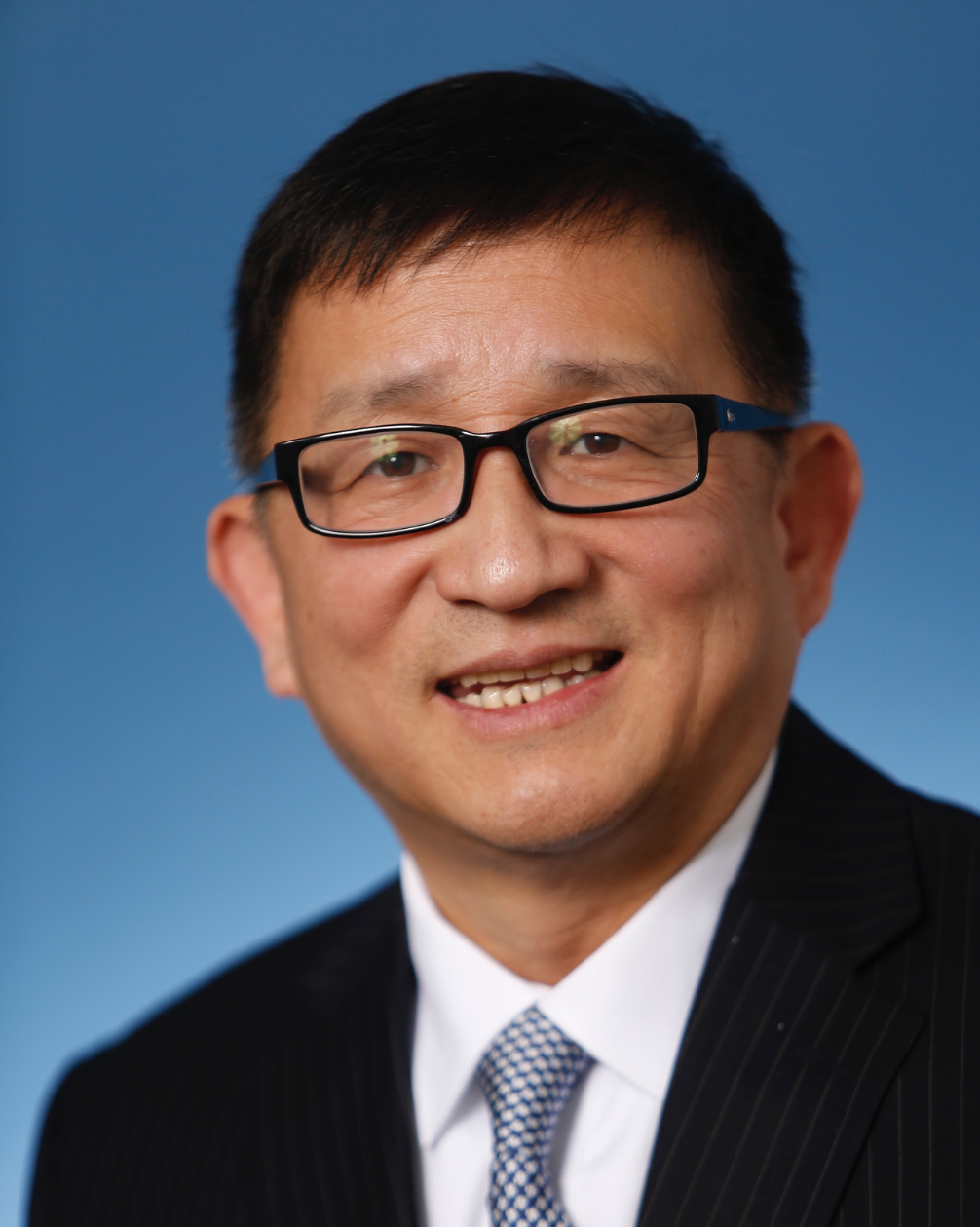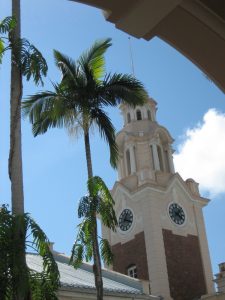
Li Cheng is professor of political science and founding director of the Centre on Contemporary China and the World (CCCW) at the University of Hong Kong. Dr. Li’s research areas include the transformation of political leaders, the Chinese middle class, technological development in China, and Sino-U.S. relations. Li is the author and editor of 17 books, including “Middle Class Shanghai: Reshaping U.S.-China Engagement,” “The Power of Ideas: The Rising Influence of Thinkers and Think Tanks in China,” and “Chinese Politics in the Xi Jinping Era.” Prior to joining HKU, Li served as director and senior fellow at the Brookings Institution’s John L. Thornton China Center and director of the National Committee on U.S.-China Relations. He is currently a Distinguished Fellow of the Munk School of Global Affairs and Public Policy at University of Toronto, a nonresident fellow at Yale University’s Paul Tsai China Center, a scholar in residence at Asia Society Hong Kong, and a member of the Council on Foreign Relations. Li received an M.A. in Asian Studies from the University of California at Berkeley and a Ph.D. in Political Science from Princeton University.
Books in English
- Xi Jinping’s Protégés: Rising Elite Groups in the Chinese Leadership (forthcoming).
- Middle Class Shanghai: Reshaping U.S.-China Engagement. Washington, DC: The Brookings Institution Press, 2021.
- The Power of Ideas: The Rising Influence of Thinkers and Think Tanks in China. Singapore: World Scientific Press, 2017.
- Chinese Politics in the Xi Era: Reassessing Collective Leadership. Washington, DC: The Brookings Institution Press, 2016.
- China’s Political Development: Chinese and American Perspectives (co-edited with Kenneth G. Lieberthal and Yu Keping). Washington, DC: The Brookings Institution Press, 2014.
- The Political Mapping of China’s Tobacco Industry and Anti-Smoking Campaign. Washington, DC: John L. Thornton China Center Monograph Series, 2012.
- China’s Emerging Middle Class: Beyond Economic Transformation (ed.). Washington, DC: The Brookings Institution Press, 2010.
- China’s Changing Political Landscape: Prospects for Democracy (ed.). Washington, DC: The Brookings Institution Press, 2008.
- Bridging Minds across the Pacific: U.S.-China Educational Exchanges 1978-2003 (ed.). Lanham, Maryland: Lexington Books, 2005.
- China’s Leaders: The New Generation. Lanham, Maryland: Rowman & Littlefield Publishers, 2001.
- Rediscovering China: Dynamics and Dilemmas of Reform. Lanham, Maryland: Rowman & Littlefield Publishers, 1997.
Books in Chinese
- 《中产上海: 重塑中美交流》中信出版社 (上海) , 2024年 (即将出版)。
- 《中美关系:变局中的利益交汇点》外文出版社 (北京) 2023年 (即将出版)。
- 《中國煙草的政治版圖》明鏡出版社 (紐約) , 2013年。
- 《通往中南海之路 : 十八大前高層領導群體》明鏡出版社 (紐約) , 2012年。
Book Chapters
- “Xi Jinping’s Third Term: Changing Domestic and International Environment,” in William A. Joseph (ed.), Politics in China, 4th and enlarged edition, New York: Oxford University Press, (forthcoming).
- “Reform and Opening Up: 1979-2016: From Engagement to Decoupling?” Yawei Liu and Michael Cerny (eds.), Finding Firmer Ground: The Role of Higher Education in U.S.-China Relations. New York: Bouden House, 2022, 37-47.
- “Intraparty Elite Politics: Reign and Resilience in the Xi Jinping Era,” in Jacques deLisle and Guobin Yang (eds.), The Party Leads All: The Evolving Role of the Chinese Communist Party. Washington, D.C.: Brookings Institution Press, 2022, 71-108.
- “China’s Millennials: Navigating Socioeconomic Diversity and Disparity in a Digital Era,” in Li Chunling, China’s Youth: Increasing Diversity amid Lasting Inequality. Washington, D.C.: Brookings Institution Press, 2021, 1-37.
- “Biden’s China Strategy: Coalition-driven Competition or Cold-War-style Confrontation?” in Mohammed Al-Ali and Ahmad Al-Astad (eds), The First 100 Days of the Biden Presidency. Abu Dhabi, UAE: Trends Publications, 2021, 57-75.
- “Xi Jinping’s ‘Proregress’: Domestic Moves toward a Global China,” in Tarun Chhabra, Rush Doshi, Ryan Hass, and Emilie Kimball (eds), The Global China: Assessing China’s Growing Role in the World. Washington D.C.: Brookings Institution Press, 2021, 41-52.
- “Avoiding Three Traps in Confronting China’s Party-State,” in Ryan Hass, Ryan McElveen, and Robert Williams (eds), The Future of U.S. Policy toward China: Recommendations for the Biden Administration. Monograph jointly published by the John L. Thornton China Center and Yale Law School Paul Tsai China Center, 2020, 8-14.
- “Lessons from China’s Economic Reopening,” in John R. Allen and Darrell M. West (eds), Reopening the World: How to Save Lives and Livelihoods. Brookings Institution e-book, 2020, 53-58, (joint article).
- “Xi Jinping’s Power and Political Risks,” in William A. Joseph (ed.), Politics in China (New York: Oxford University Press), 3rd and enlarged edition, 2019, 201-236.
- “Tobacco Governance: Elite Politics, Subnational Stakeholders, and Historical Contexts,” in Mathew Kohrman, ed.Poisonous Pandas: Chinese Cigarette Manufacturing in Critical Historical Perspectives. Palo Alto, CA.: Stanford University Press, 2018, 179-204.
- “Political Elites in China: A Dynamic Balance between Integration and Differentiation,” in Heinrich Best and John Higley, eds. The Palgrave Handbook of Political Elites. London, United Kingdom: Palgrave Macmillan, 2017, 295-314.
- “Introduction: Bringing Ethics Back into Chinese Discourse,” in He Huaihong, Moral Decay or Ethical Awakening? Social Ethics in a Changing China. Washington, DC: Brookings Institution Press, 2015, xv-xl.
- “China’s Domestic Dynamics: Implications for India and the United States.” The Second Modi-Obama Summit: Building the India-U.S. Partnership, Strobe Talbott (ed.). Washington, DC: Brookings Institution Press, 2015, 19-21.
- “China’s Future Challenges.” Global Prospects for 2018-23. Tokyo: Hitachi Research Institute Publication, 2015, 21-24.
- “China’s Robust Scholarship in Political Science and the Dilemma of Political Reform (Preface,” in Kenneth Lieberthal and Cheng Li (eds), China’s Political Development: Chinese and American Perspectives. Washington, DC: Brookings Institution Press, 2014, ix-xiii, (joint article).
- “The Local Factor in China’s Intra-Party Democracy,” in Kate Xiao Zhou, Shelley Rigger, and Lynn T. White III (eds.) Democratization in China, Korea, and Southeast Asia? Local and National Perspectives. London: Routledge, 2014, 87-109.
- “China’s Communist Party-State: The Structure and Dynamics of Power,” in William A. Joseph (ed.), Politics in China. New York: Oxford University Press), 2nd and enlarged edition, 2014, 192-223.
- “Top-Level Reform or Bottom-Up Revolution?” in Andrew J. Nathan, Larry Diamond, and Marc F. Plattner, (eds.), Will China Democratize? Baltimore, MD: The Johns Hopkins University Press, 2013, 51-58.
- “China in Revolution and War,” in Martin Indyk, Tanvi Madan, and Thomas Wright, (eds.), A Presidential Briefing Book: Policy Recommendations for President Obama’s Second Term. Washington, DC: Brookings Institution Press, 2013.
- “Fighting for a Constitutional China: Public Enlightenment and Legal Professionalism,” in He Weifang, In the Name of Justice: Striving for the Rule of Law in China. Washington DC: The Brookings Institution Press, 2012, xvii-xlix.
- “Interest Group Politics in China: A Paradox of Fear and Hope,” in Kenneth Lieberthal, Cheng Li, and Yu Keping (eds), China’s Political Development: Chinese and American Perspectives Washington DC: The Brookings Press, 2012.
- “China’s Team of Rivals,” (reprint) in Zhiqun Zhu (ed.), 14th edition, Global Studies: China. New York: McGraw-Hill Higher Education, 2012, 121-124.
- “Shaping China’s Foreign Policy: The Paradoxical Role of Foreign-Educated Returnees,” in Allen Carlson and Ren Xiao (eds), The New Frontiers of Chinese Foreign Policy. Lanham, Maryland: Lexington Books, 2011, 41-62.
- “The China Paradox and American Misperceptions” in Douglas G. Spelman, ed., The United States and China: Mutual Public Perceptions. Washington, DC: The Wilson Center Publication, 2011, 26-37.
- “Introduction: A Champion of Chinese Optimism and Exceptionalism,” in Hu Angang, China in 2020: A New Type of Superpower. Washington, DC: The Brookings Institution Press, 2011, xv-xl.
- “How China Chose its Top Leaders: The Dual Succession of Xi and Li in 2012,” in Sangchul You (ed), China Trends 2010-2011. Seoul: Institute of China Studies, 2010, 76-86.
- “China’s Communist Party-State: The Structure and Dynamics of Power,” in William A. Joseph (ed), Politics in China. New York: Oxford University Press, 2010, 165-191.
- “Leadership: Future Scenarios” in Linsun Cheng (ed.) Berkshire Encyclopedia of China: Modern and Historic Views of the World’s Newest and Oldest Global Power. Great Barrington, MA: Berkshire Publishing, 2009, 1282-1285.
- “Leadership: Ethnic Minority” in Linsun Cheng (ed.) Berkshire Encyclopedia of China: Modern and Historic Views of the World’s Newest and Oldest Global Power. Great Barrington, MA: Berkshire Publishing, 2009, 1279-1281.
- “China’s Political Trajectory: Internal Contradictions and Inner-Party Democracy.” In Eva Paus, Jon Western, and Penelope Prime, (eds) The Global Giant: Is China Changing the Rules of the Game? New York, NY: Palgrave Macmillan, 2009, 51-71.
- “Introduction: Making Democracy Safe for China” in Yu Keping, Democracy Is a Good Thing: Essays on Politics, Society and Culture in Contemporary China. Washington, DC: The Brookings Institution Press, 2009, xvii-xxxi.
- “China’s Fifth Generation” in Kenneth B. Pyle (ed), Emerging Leaders in East Asia: The Next Generation of Political Leadership in China, Japan, South Korea and Taiwan. Seattle, WA: National Bureau of Asian Research Press, 2008, 15-53.
- “China’s Telecom Industry on the Move: Domestic Competition, Global Ambition, and Leadership Transition,” in Amit Singh Sisodiya and N. Janardhan Rao, (eds) Global Telecommunications. India: Icfai University Press, 2008, 58-88.
- “After Hu, Who? The Rising Stars of China’s Fifth Generation Leaders,” in W. John Hoffmann and Michael Enright (eds), China in the Future. New York: John Wiley & Son, 2007, 213-65.
- “The New Military Elite: Generational Profile and Contradictory Trends,” in David M. Finkelstein and Kristen Gunness (eds), Swimming in a New Sea: Civil-Military Issues in Today’s China. Armonk, New York: M.E. Sharpe, 2007, 48-73.
- “The Sixteenth Central Committee of the Chinese Communist Party: Emerging Patterns of Power-Sharing,” in Lowell Dittmer and Guoli Liu, eds. China’s Deep Reform: Domestic Politics in Transition. Lanham, MD: Rowman & Littlefield, 2006, 81-118, (joint article).
- “Deciphering Hu’s Leadership and Defining China’s New Elite Politics,” in John Wong and Hongyi Lai, eds. China Into the Hu-Wen Era: Policy Initiatives and Challenges. Singapore: University of Singapore Press and World Scientific Press, 2006, 61-90.
- “The ‘New Deal:’ Politics and Policies of the Hu Administration,” in T. Y. Wang, ed. China After the 16th Party Congress: Prospects and Challenges. Willowdale, Ontario, Canada: de Sitter Publications, 2005, 7-24.
- “Political Localism Versus Institutional Restraints: Elite Recruitment in the Jiang Era,” in Barry Naughton and Dali L. Yang, eds. Holding China Together: Diversity and National Integration in the Post Deng Era, Cambridge: Cambridge University Press, 2004, 29-69.
- “The New Political Elite and the New Trend in Factional Politics,” in François Godement, ed., China’s New Politics, Les cahiers d’asie No. 3, Paris: Centre Asie ifri/IFRI, 2003, 55-89.
- “Poised to Take the Helm: Rising Stars and the Transition to the Fourth Generation,” in David M. Finkelstein and Maryanne Kivlehan (eds), China’s Leadership Transition: Prospects and Implications. Armonk, New York: M.E. Sharpe, 2002, 21-44.
- “Diversification of Chinese Entrepreneurs and Cultural Pluralism in the Reform Era,” in Shiping Hua, ed., Chinese Political Culture 1989-2000. Armonk, New York: M.E. Sharpe, 2001, 219-245.
- “Promises and Pitfalls of Reform: New Thinking in Post-Deng China,” in Tyrene White, ed. China Briefing: A Century of Transformation. New York: M.E. Sharpe, 2001, 123-157.
- “‘Credentialism’ versus ‘Entrepreneurism:’ The Interplay and Tensions between Technocrats and Entrepreneurs in the Reform Era,” in Chan Kwok Bun, ed. Chinese Business Networks: State, Economy and Culture. New York: Prentice Hall, 1999, 86-111.
- “Fourth Generation Leadership in the PRC: Collective Characteristics and Intra-Generational Diversities,” in Robert G. Sutter, ed. China’s Future: Implications for United States Interests. Washington, DC: The Federal Research Division, Library of Congress, 1999, 13-36.
- “200 Million Mouths Too Many: China’s Surplus Rural Labor,” in Orville Schell and David Shambaugh, eds. The China Reader: The Reform Era. New York: Vintage Books, 1999, 362-373.
- “Politics and Government,” in Brian Hook, ed. Shanghai and the Yangtze Delta: A City Reborn. Cambridge, England: Oxford University Press, 1998, 30-73, (joint article).
- “Internal Migration in China: Current Status and Future Prospects,” in Borge Bakken, ed. Migration in China. Copenhagen, Denmark: Nordic Institute of Asian Studies Press, 1998, 17-65.
- “Problems of State-Owned Enterprises in China,” in Spotlight on China: Governance, Humanity, and Values. New York: The American Forum for Global Education Publication, 1997.
- “Sharing the Burden of Government: Reducing Borders Between Government, Business and NGOs,” in Governing in an Environment of Increased Regional Economic Cooperation. Ontario, Canada: Institute on Governance, 1994, 29-41.
- “China Coast Identities: Regional, National, and Global,” in Samuel Kim and Lowell Dittmer, (eds.), China’s Quest for National Identities. Ithaca, NY: Cornell University Press, 1993, 154-193, (joint article).
- “Diversification Among Mainland Chinese Intellectuals,” in King-yuh Chang, (ed.), Mainland China After the Thirteenth Party Congress. Boulder, Colorado: Westview Press, 1990, 447-73.
Articles in Refereed Journals
- “China’s Elite Politics in Xi’s Third Term.” China Journal, (forthcoming)
- “Will China’s E-commerce Reshape a Reopening World?” The Cairo Review of Global Affairs, No. 34 (June 10, 2020), (joint article).
- “Rule of the Rigid Compromiser.” The Cairo Review of Global Affairs, No. 33 (Spring, 2019): 127-137, (joint article).
- “China Rebalancing: A Debate.” The Evolution of China’s Capital Market Special Issue. The Journal (Vol. 3, 2015): 11-29.
- “Tobacco Epidemic: China’s Emerging Health, Economic, and Political Crises.” World Journal of Tobacco or Health, Vol. 1, No. 2 (2015).
- “The Future Role of the Chinese Middle Class.” Georgetown Journal of International Affairs. Vol. 14, No. 2 (Summer/Fall 2013), 51-59, (joint article).
- “Top-Level Reform or Bottom-Up Revolution?” Journal of Democracy, Vol. 24, No. 1: (January 2013): 41-48.
- “Rule of the Princelings.” The Cairo Review of Global Affairs, No. 8 (Winter, 2013): 34-47.
- “The End of the CCP’s Resilient Authoritarianism? A Tripartite Assessment of Shifting Power in China.” The China Quarterly, No. 211 (September 2012): 595-623.
- “Leadership Transition in the CPC: Promising Progress and Potential Problems.” China: An International Journal, Vol. 10, No. 2 (August 2012): 23-33.
- “Shaping China’s Foreign Policy: The Paradoxical Role of Foreign-Educated Returnees.” Asia Policy, No. 10 (July 2010): 65-85.
- “The Chinese Communist Party: Recruiting and Controlling the New Elites.” Journal of Current Chinese Affairs, Vol. 38, No. 3 (2009): 13-33.
- “China’s Fifth Generation: Is Diversity a Source of Strength or Weakness?” Asia Policy, No. 6 (July 2008): 53-93.
- “China’s New Military Elite.” China Security. Vol. 3, No. 4 (Autumn 2007): 62-89 (joint article).
- “China in the Year 2020: Three Political Scenarios.” Asia Policy, No. 4 (July 2007): 17-29.
- “Foreign-Educated Returnees in the PRC: Increasing Political Influence with Limited Official Power.” Journal of International Migration and Integration. Vol.7, No. 4 (Fall 2006): 493-516.
- “The New Bipartisanship within the Chinese Communist Party.” Orbis, Vol. 49, No. 3 (Summer 2005): 387-400.
- “The ‘New Deal:’ Politics and Policies of the Hu Administration,” Journal of Asian and African Studies, Vol. 38, Nos. 4-5 (December 2003): 329-346.
- “Growth and Regional Inequality in China during the Reform Era,” China Economic Review, Vol. 14 (2003), 186-200, (joint article).
- “The Sixteenth Central Committee of the Chinese Communist Party: Hu Gets What?” Asian Survey, Vol. 43, No. 4 (July/August 2003), 553-597 (joint article).
- “Dialogue with the West: The Political Message of Avant-Garde Artists in Shanghai” Critical Asian Studies, Vol. 35, No. 1 (March 2003), 59-98 (joint article).
- “China in 2000: A Year of Strategic Rethinking,” Asian Survey, Vol. 41, No. 1 (January/February 2001), 71-90.
- “Jiang Zemin’s Successors: The Rise of the Fourth Generation of Leaders in the PRC,” The China Quarterly, No. 161 (March 2000), 1-40.
- “China in 1999: Seeking Common Ground at a Time of Tension and Conflict,” Asian Survey, Vol. 40, No. 1 (January/February 2000), 112-129.
- “The Fifteenth Central Committee of the Chinese Communist Party: Full-Fledged Technocratic Leadership with Partial Control by Jiang Zemin,” Asian Survey, Vol. 38, No. 3 (March 1998), 231-264, (joint article).
- “City Monsoon: The Cultural Spirit of Beijing and Shanghai,” Journal of Chinese Sociology and Anthropology, Vol. 29, No. 2 (1997), (Guest editor).
- “Surplus Rural Laborers in China: Current Status and Future Prospects,” Asian Survey, Vol. 36, No. 11 (November 1996), 1122-1145.
- “Rediscovering Urban Subcultures: Contrast between Shanghai and Beijing,” The China Journal, No. 36 (July 1996), 139-153.
- “University Networks and the Rise of Qinghua Graduates in China’s Leadership,” The Australian Journal of Chinese Affairs, No. 32 (July 1994), 1-32.
- “The Army in the Succession to Deng Xiaoping: Familiar Fealties and Technocratic Trends,” Asian Survey, Vol. 33, No. 8 (August 1993), 757-786 (joint article).
- “China’s Technocratic Movement and the World Economic Herald,” Modern China, Vol. 17, No. 3 (July 1991), 342-388 (joint article).
- “Elite Transformation and Modern Change in Mainland China and Taiwan: Empirical Data and the Theory of Technocracy,” The China Quarterly, No. 121 (March 1990), 1-35 (joint article).
- “Localism, Elitism and Immobilism: Elite Formation and Social Change in Post-Mao China,” World Politics, Vol. 42, No. 1 (October 1989), 64-94 (joint article).
- “Diversification among Chinese Intellectuals,” Issues & Studies, Vol. 24, No. 9, (September 1988), 50-77 (joint article).
- The Thirteenth Central Committee of the Chinese Communist Party: From Mobilizers to Managers,” Asian Survey, Vol. 28, No. 4 (April 1988), 371-399 (joint article).



